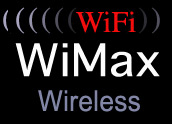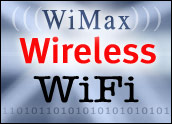
Municipal wireless networks are generating a great deal of controversy lately, compelling some state legislatures to seek to outlaw them. The reason for the public policy power play at state houses? Powerful wireless service providers and cable companies are lobbying behind the scenes, in states like Florida, to stop the local governments from creating free wireless and WiFi networks when they have millions of customers who are still perfectly willing to pay for services.
“I expect more states to introduce anti-municipal broadband bills and in states where the bills died in committee, I expect their sponsors to re-introduce them in the next session,” writes wireless analyst Esme Vos, in the MuniWireless.com March 2005 Report. Vos says that the opponents of municipal broadband networks have created their own think tanks, at the state level, to argue in the media and before legislators that the networks are a waste of tax dollars. “They purport to have altruistic motivation,” said Vos.
For the last three years, many local governments in the U.S. and in Europe have quietly sought to build wireless networks. Many cities are building WiFi networks, because they can be easily deployed by city employees, police and firemen, reducing overall telecom costs. Some of the municipal wireless networks are already quite popular, including those in Fullerton, Calif., Spokane, Wash., Los Lunas, N.M., Lexington, Ky. and Columbia, S.C.
Pilot Programs
A firm called AirTegrity Wireless is currently “deploying a WiMax pilot program for greater Lake Tahoe,” a spokesman said. And earlier this month, government officials in Philadelphia announced one of the most high-profile wireless municipal networks to date. The city’s mayor, John Street, recently detailed the plan for Wireless Philadelphia, the city’s project to bring wireless broadband to everyone in its surroundings.
It will cost US$10 million dollars to install up to 3,000 wireless nodes on light poles all over the 135-square-mile city. An additional $5 million is being budgeted to run the network for the first two years. The money will be raised through taxable bonds. No vendor has been picked yet to do the install or to provide equipment for the wireless network.
That hasn’t stopped some critics from caviling about the plan. “Swiss cheese — that’s one way to describe the planned municipal wireless networks,” said Tony Katsulos, a spokesman for InnerWireless, a wireless networking technology vendor. “Whether it’s WiFi, or WiMax, the huge holes in the plan are how or whether wireless will work indoors.”
Katsulos said that the “wireless clouds that are being discussed for Philadelphia, Minneapolis and other cities will not only be very difficult to implement, but they won’t provide in-building coverage, for the same reason that cell phone signals can’t penetrate buildings.”
He adds that the municipal wireless networks may also wreak havoc on corporate networks, running on their own wireless protocols. There are a number of “physics and RF [radio frequency] challenges of providing in-building wireless voice and data coverage,” said Katsulos.
Different Perspectives
Other analysts disagree. “The increased interest in municipal wireless broadband networks is driving innovation among software developers — back office, network security and hotzone management — and vendors of mesh networking equipment and antennae,” writes Vos.
In Europe last week, at the industry’s first awards show to honor innovation in wireless municipal networks, Sweden-based Appear Networks was honored for its creativity. The company developed a WiFi project for the Paris bus system, and earned an award for Best Public WiFi Product at the Wireless Broadband Innovation trade show in London. Other high-profile wireless municipal projects from Bristol, U.K. and Sweden, also received plaudits at the conference.
Dave Mock, an analyst with CurrentOfferings.com, said he has used the municipal wireless network in Fullerton, Calif., regularly, for free, without problem. “Many cities are attracted to wide area WiFi nets because they can be deployed quickly for use by city employees and safety personnel,” said Mock, author of Tapping Into Wireless (McGraw-Hill). “The ability to also offer wireless broadband to residents is icing on the cake. Often, large sections of cities and suburbs are not even covered by DSL [digital subscriber lines] or cable, so a wireless service is a very attractive way to get ignored residents connected.”
Interference Minimized
To be sure, there may indeed be interference problems with the networks, but that is the kind of challenge that is always there when new wireless networks are built, said a spokeswoman for Wireless Valley, an Austin, Texas-based software firm. But “to prevent coverage holes and spotty service, resulting from network interference, detailed network design and planning will be a crucial part of the deployment process,” the spokeswoman said.
Networks built for the new terminal at Heathrow Airport in London and for the New York City subway have utilized new network development tools — and eliminated interference problems.
The same can be done for municipal-wide networks. “Software allows users to visualize the entire city on the computer screen, and account for objects, like skyscrapers and trees,” said the spokeswoman for Wireless Valley.
In the meantime, as the technology continues to emerge, lobbyists for municipal wireless networks are working their legislatures, just like their opponents are. “State legislation we are fighting right now in Tallahassee would essentially ban municipal communications services,” said Justin Campfield, a spokesman for the Florida Municipal Electric Association (FMEA), a 32-member organization of utilities owned by cities.











































"…the huge holes in the plan are how or whether wireless will work indoors."
Why is it that analyst persist in misrepresenting what these Muni are trying to do. Where does it say in any of the major planned deployments that these Wireless Networks will be penetrating buildings? These are Outdoor networks providing secondary/incremental indoor coverage.
The focus of most planned Metro Nets is to provide subscribers outdoor (best effort) coverage and if they want the service to penetrate their office building and provide quality service the Private entity running the service can easily provide these commercial and select residential customers a simple Wireless Bridge/Antenna package (low $$) and connect them to the service. This then becomes a Fixed service and will be provided at a premium fee.
The design that will prevail is as follows:
Metro/Wide Area Gateway Access to the Wireless Network will be provided by a combination of Fiber drops and a Central Base Station Broadcast (WiMAX 5Ghz) feed to a Mesh Node.
The Mesh Node will be a multiple Radio system with 2.4Ghz (802.11b/g)providing (key to cost effectiveness)standards based Access to Nodes, 5Ghz Backhaul between Mesh Nodes and or to Base Station and specialty radio (4.9Ghz) for Police/Fire Homeland functions.
If customers want higher bandwidth and SLA type services these can be delivered either directly for a Mesh Node to an AP/Bridge on Building or direct from Central Broadcast Systems (WiMAX-5Ghz Services).
Jacomo